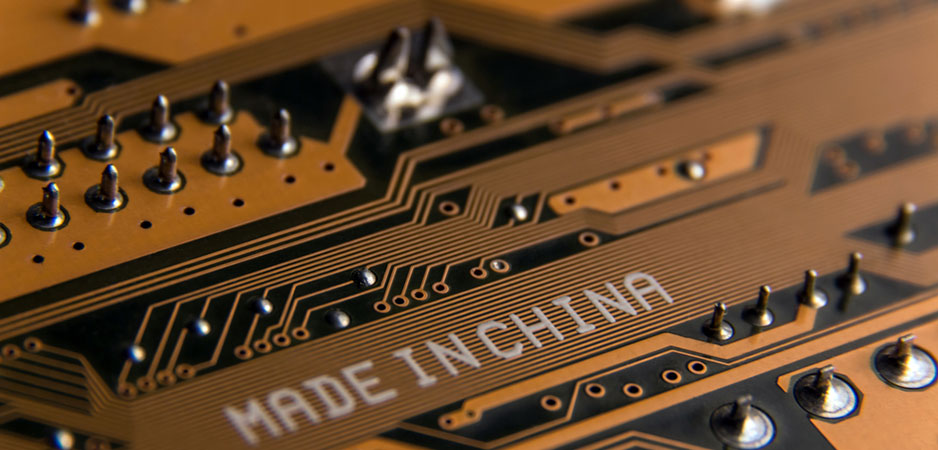Science and technology will become the lifeblood of the Chinese economy in this decade and will remain its lifeblood in the future. That is, in part, because China has become sufficiently advanced to be able to effectively compete with the US and other technological leaders in the West. It is also the key to China’s ability to innovate and compete in the future, as it is for other advanced economies. Innovation-driven growth is also required in order for Beijing to smoothly deleverage away from its manufacturing base model of growth, which is slowly running out of steam.
In the decade that has just passed, its productivity gains faltered and credit-driven investment in low return capital propped up its growth. China must address its slowing productivity gains to produce a smooth rebalancing of the economy. Productivity growth will not come from textiles, steel or the property market, and the flourishing services sector will require cutting-edge technology to remain competitive. To pull it off, China will need to acquire and deploy advanced technology quickly and efficiently throughout its economy.
The Coming Chinese World Order
China is diligently preparing to assume a seemingly preordained role as the world leader in a plethora of areas. It is driven. It is focused. And it will stop at nothing to ensure that it has all the advantages it can glean from the existing world order to create a world order in its own image. Technology is absolutely critical to achieving that objective, and there is little that is more important in that regard than cutting-edge telecommunications — specifically 5G technology.
The Huawei saga has served to illustrate this point. America’s issues with Huawei are as much about who has access to, and thus controls, the data of the future, as they are about superpower politics and the rule of law. Some Western intelligence sources believe the company is state-owned and has deep connections to China’s intelligence services. Its founder was an engineer with the People’s Liberation Army (PLA), and it is worth adding that no large Chinese company is fully independent of the government.
Although China spends more than $200 billion on research (second only to the US), generates close to 30,000 PhDs in science and engineering, and leads the world in patent applications each year, its record is mixed in terms of the actual impact of innovation, as measured by the success of companies in commercializing new ideas and competing in the global market. China has some unique strengths in innovation, which includes the rapid commercialization of new ideas by virtue of the size of its consumer base.
It also has the world’s most extensive manufacturing ecosystem, enabling continuous innovation in production processes that reduce costs and improve quality, and has created capacity for research with a growing number of universities and research institutions, as well as an expanding pool of talent. On the minus side of the ledger, China’s slow regulatory processes and weak intellectual property protections prevent foreign investors from wanting to bring their best and brightest researchers and innovations to the country.
Completing the journey from innovation sponge (absorbing and adapting existing technology and knowledge from around the world) to global innovation leader is not just a way to signal China’s progress as an economy and society. The boost to productivity that innovation provides is critically important for sustaining China’s growth.
Beijing has enacted some two dozen laws that have created a technology-siphoning machine. That apparatus maintains databases of foreign co-optees and distributes stipends, sinecures and cash to foreign donors of high-tech innovations. China has targeted all sources of American innovation, including universities, corporations and government labs, exploiting both their openness and naivete, with methods and tradecraft custom-tailored to each target.
The Chinese government’s current system for processing and reverse engineering stolen designs has grown significantly larger than it was during the Cold War and has developed from a strictly military operation into a system permeating the entire Chinese government. It is an elaborate, comprehensive system for identifying foreign technologies, acquiring them by every means imaginable and converting them into weapons and competitive goods. China could not have experienced the dramatic economic transformation it has experienced in the 21st century, nor have sustained its progress as it has, without inexpensive and unrestricted access to other countries’ technology.
Chinese firms have routinely become investors in American startups, particularly those working on cutting-edge technologies with potential military applications. These are companies that make rocket engines for spacecraft, sensors for autonomous navy ships and printers that make flexible screens that can be used in fighter-plane cockpits. Many of the Chinese firms are owned by state-owned companies or have direct connections to Chinese leaders.
According to the US Department of Defense, Beijing actively encourages Chinese companies with close government ties to invest in American startups specializing in critical technologies such as artificial intelligence (AI) and robots to advance China’s military capacity, as well as its economy.
US government controls intended to protect potentially critical technologies against countries like China have fallen short. It took a while, but such transactions eventually started ringing alarm bells in Washington. US lawmakers raised broad questions about the nature of China’s economic relationship with the US well before the Trump administration started applying tariffs on Chinese products, in an effort to reduce the inherent inequity in bilateral trade between the two nations.
China is extremely capable and driven. When it aims to be a leader in a particular sector or acquire a certain technology, it does so with precision. There is no question that Beijing aims to be a leader in AI, semiconductors and any number of other sub-sectors of the technology-driven 21st-century economy. It has the advantage of having a lot of money to spend and plenty of people and resources to devote to the issue.
Since it certainly appears that the US government will not be devoting similar resources to the tech sector any time soon, it is merely a question of time until China captures that title, too. In the battle for the future, the Chinese Communist Party understands very well what is at stake. It took the US and West too long to realize what China was doing, and by the time they did, Beijing was already approaching strongly from behind. Soon enough, the West will be looking at China in the tech space from the front window, rather than the rearview mirror.
*[Daniel Wagner is the CEO of Country Risk Solutions and author of the new book, “The America-China Divide.” This article is an excerpt from the book.]
The views expressed in this article are the author’s own and do not necessarily reflect Fair Observer’s editorial policy.
Support Fair Observer
We rely on your support for our independence, diversity and quality.
For more than 10 years, Fair Observer has been free, fair and independent. No billionaire owns us, no advertisers control us. We are a reader-supported nonprofit. Unlike many other publications, we keep our content free for readers regardless of where they live or whether they can afford to pay. We have no paywalls and no ads.
In the post-truth era of fake news, echo chambers and filter bubbles, we publish a plurality of perspectives from around the world. Anyone can publish with us, but everyone goes through a rigorous editorial process. So, you get fact-checked, well-reasoned content instead of noise.
We publish 2,500+ voices from 90+ countries. We also conduct education and training programs
on subjects ranging from digital media and journalism to writing and critical thinking. This
doesn’t come cheap. Servers, editors, trainers and web developers cost
money.
Please consider supporting us on a regular basis as a recurring donor or a
sustaining member.
Will you support FO’s journalism?
We rely on your support for our independence, diversity and quality.






